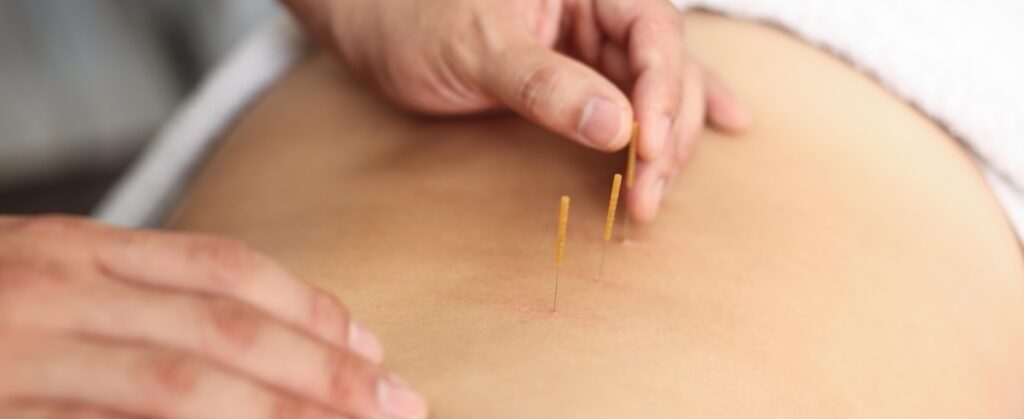Acupuncture

There are two main forms of acupuncture… Traditional and Medical. At Richmond Osteopaths we offer both.
What is Traditional Acupuncture?
This form of acupuncture is a treatment based on Traditional Chinese Medicine (TCM). Traditional acupuncture uses very fine sterile, single-use needles which are inserted into specific anatomical sites, commonly referred to as acupuncture points or acupoints.
Who uses Traditional Acupuncture?
Many people benefit from acupuncture for specific symptoms or conditions, including: tension type headaches, migraine headaches, back pain, neck pain, jaw pain and arthritis pain.
Others may choose it as a preventive measure to strengthen their constitution or because they just feel generally unwell. Acupuncture is considered suitable for all ages including babies, children and the elderly.
How does it work?
TCM believe in the concept of qi (pronounced “chee”) which is a type of life force or energy, that flows through energy pathways (meridians) throughout the body. Qi maintains the dynamic balance of the body and its internal functions. An imbalance of qi whether it’s too much, too little, or blocked flow can cause diseases, by halting the natural self-healing response of the body. Acupuncturists insert needles at selected acupoints, to restore the balance of qi, thereby restoring the natural self-healing process.
The focus is on the individual, and not their illness, and all the symptoms are seen in relation to each other. Each patient is unique; two people with the same western diagnosis may well receive different treatment.
What is Medical Acupuncture?
Medical Acupuncture is also referred to as Dry Needling, and is commonly practiced by Doctors, Physiotherapists and Osteopaths.
How is it used?
Dry Needling, has been shown to be particularly effective in reducing pain and is normally used as an adjunct to other therapies. Dry needling is also used to treat knots which can be found in tight muscles and can often cause pain; they are called Myofascial trigger points.
These knots can help to produce and maintain a pain cycle. Dry needling of trigger points helps to reduce a local twitch response, which is an involuntary spinal cord reflex causing the tight band of muscles to contract. Dry needling is believed to to release natural opioids in the body, which in turn helps to reduce the twitch response.
If you are not sure which type of therapy is best for your condition, please book in today for a FREE 15-minute treatment.
